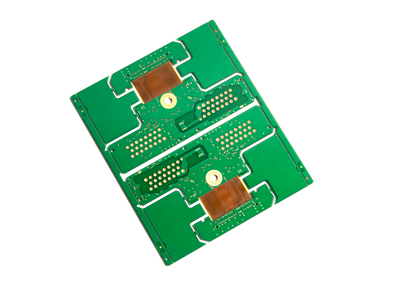When it comes to "rigid flex PCB design," understanding the best practices and guidelines is crucial for ensuring optimal performance and reliability of the circuit board. This article aims to provide insights into the key elements and techniques involved in designing rigid flex PCBs, helping you make informed decisions throughout the design process.

1.Understand the Hybrid Nature: Rigid flex PCBs combine the benefits of rigid and flexible circuit boards, offering versatility and space-saving capabilities. It's essential to comprehend the unique characteristics of both rigid and flexible sections and design them accordingly to maximize their advantages.
2.Plan the Layer Stackup: Developing an effective layer stackup is crucial in rigid flex PCB design. Carefully consider the arrangement of rigid and flexible layers to ensure proper signal integrity, impedance control, and mechanical stability. Optimize the layer stackup to minimize signal interference and impedance mismatches.
3.Component Placement Considerations: During component placement, it's vital to account for the bending and flexing areas of the board. Place components strategically to avoid interference with the flexible portions and ensure sufficient clearance for bending. Additionally, distribute heat-generating components evenly across the board to prevent localized hotspots.
4.Routing Guidelines: Follow proper routing guidelines to maintain signal integrity and mechanical reliability. Pay attention to trace widths, differential pair routing, impedance matching, and bend radius restrictions. Employ curved traces and staggered vias in the flex regions to minimize stress concentration and enhance flexibility.
5.Flex Area Design: Design the flex areas with attention to detail. Determine the appropriate number and size of flex areas based on the board's intended application and bending requirements. Implement stiffeners or reinforcement structures where necessary to prevent excessive bending and ensure long-term durability.
6.Thermal Management: Effective thermal management is essential in rigid flex PCB design. Incorporate proper heat dissipation techniques such as thermal vias, copper pours, and heat sinks to regulate temperature and prevent overheating. Consider the location of heat-sensitive components to minimize their exposure to excessive heat.
7.Design for Manufacturing (DFM): Collaborate closely with the manufacturer during the design phase to optimize manufacturability. Follow DFM guidelines provided by the manufacturer to ensure that your design meets the capabilities and limitations of the fabrication process. This collaboration can help reduce costs, improve yield rates, and streamline the production timeline.
Conclusion:
Designing rigid flex PCBs requires a thorough understanding of the unique considerations and guidelines specific to this technology. By following best practices and incorporating the mentioned techniques, you can achieve successful rigid flex PCB designs that meet performance, reliability, and manufacturability requirements. Remember to stay updated with the latest advancements and consult with experienced professionals to enhance your design expertise in this field.
Get more knowledge anout Rigid Flex PCB Design please refer to Rigaopcb:https://www.rigaopcb.com/